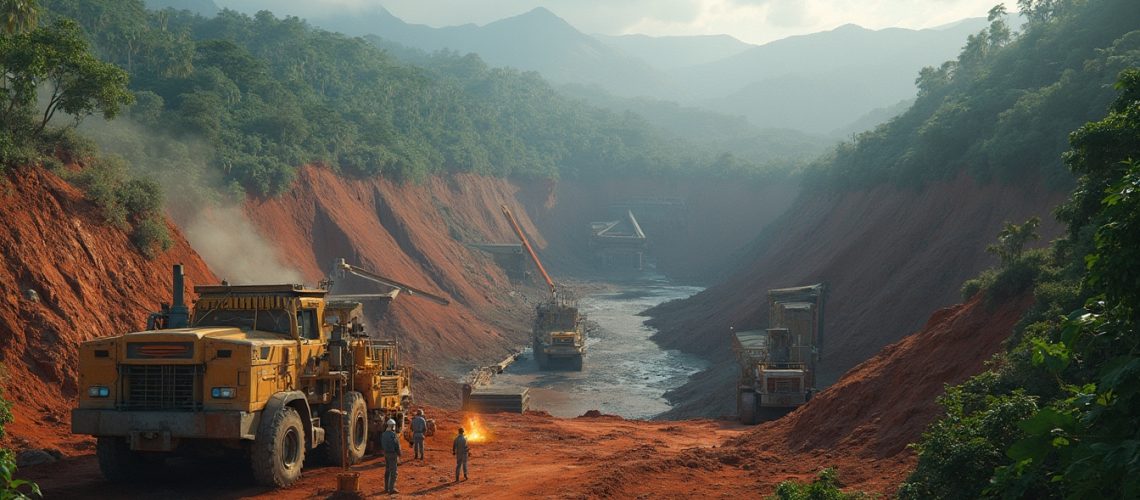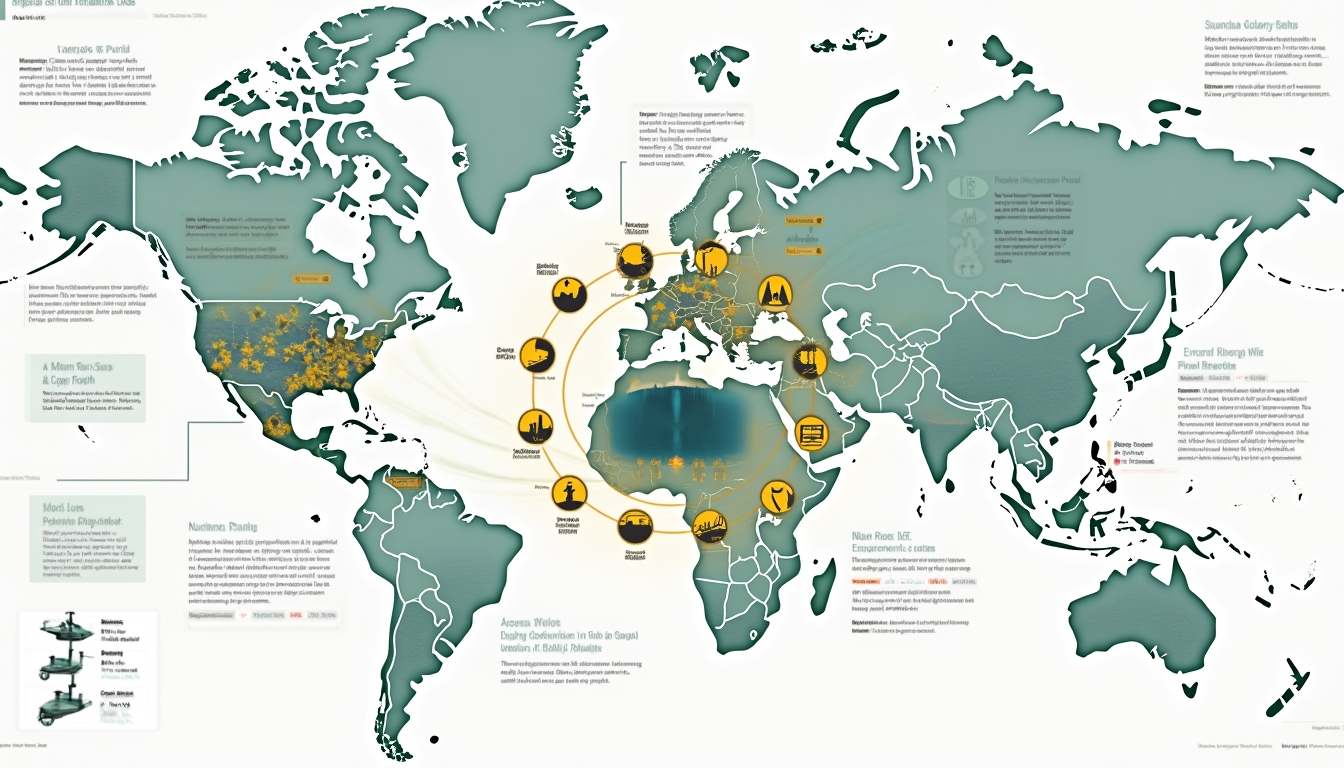In the midst of escalating concerns over Panama copper mine reopening challenges, the global mining industry now faces a turning point wrought by environmental, technical, and political complexities. The situation surrounding the mine reopening challenges has reverberated throughout Panama’s economic and social fabric, forcing industry experts to re‐examine every aspect of the project's viability. With the world watching and global copper markets in flux, the reopening challenges extend far beyond national borders.
What Triggered the Mine’s Shutdown?
The closure of the Cobre Panama mine emerged in late 2023 after a series of converging issues. A series of environmental protests, coupled with political upheaval, pushed the Supreme Court to rule the mine’s 40‐year contract extension unconstitutional. This decision, which reversed decades of established practices, was largely due to mounting pressures over environmental stewardship and the public’s demand for accountability.
Key contributing factors included:
- A controversial contract that required a minimum annual payment of $375 million to Panama.
- Intense public demonstrations and community opposition to perceived corporate greed.
- Progressive legal challenges that questioned the environmental and social impact of large‐scale mining investment.
This perfect storm of political and environmental factors highlights the broader implications for the region, echoing similar disputes such as those witnessed during periods of political instability in west african mining, where governance challenges and labour issues create equally precarious scenarios.
Economic Reverberations: Who Really Pays?
The shutdown of the mine has had severe economic consequences for Panama. The immediate disappearance of roughly 54,000 jobs, as highlighted by the National Council of Private Companies, signals not only a domestic crisis but also issues of regional and global supply disruption. With the mine once contributing about 5% to Panama’s GDP, its closure has destabilised the wider economic spectrum, affecting local businesses and community support networks in equal measure.
- Textile cooperatives have seen a dramatic contraction in business.
- Community services and local economies are in decline as the economic engine of the mine has halted.
- Rushed economic projections now have to account for lost revenue and halted infrastructure projects.
While these economic hardships suggest a dire scenario, some experts posit that opportunities may emerge through a strategic reassessment of the asset. There is intense debate about whether alternative operational models, such as incorporating sustainable steelmaking efforts, can help modernise the industry and alleviate some immediate pressures.
Technical Barriers: What Would it Take to Restart?
Resuscitating the dormant operations of Cobre Panama would require overcoming substantial technical hurdles. The mine’s equipment has not been idle without consequence. Years of corrosion in Panama's humid Caribbean climate have deteriorated essential machinery, which now necessitates extensive repairs before the mine can resume functioning safely.
Among the primary technical issues are:
- The reactivation of specialized machinery such as Liebherr haul trucks and Caterpillar bulldozers, which now need comprehensive rehabilitation.
- Ensuring operational safety by replacing or repairing outdated technology crucial to modern mining practices.
- Rehiring and retraining the specialist workforce that was once proficient in handling intricate mining operations.
Industry experts estimate that even under optimal conditions, a six‐month timeframe is necessary simply to reverse the wear and tear imposed by prolonged inactivity. Such a delay not only adds to the reopening challenges but also exerts pressure on global copper supply. This has triggered discussions among market analysts on the potential impact of a global copper supply squeeze, which could see international prices fluctuate sharply.
Political Constraints and the Social Contract
One of the most intricate challenges in re‐igniting operations lies within the realm of politics and governance. The reopening of the mine is tethered to a highly charged political context. President Mulino, who has been at the forefront of negotiations, has stipulated several preconditions integral for a safe return to production. Among these, the dropping of all ongoing arbitration proceedings is critical, although the opposition in the National Assembly remains a daunting obstacle.
Furthermore, there exists significant resistance among labour unions, who fear that the reopening of the mine might further erode their bargaining power and working conditions. The situation is complicated by the need to lift a currently imposed open‐pit mining moratorium. Such politically sensitive factors require intricate negotiation strategies and mutual concessions to establish trust.
Key political prerequisites include:
- Transparent and participatory renegotiations with all stakeholders.
- An overhaul of existing contracts to integrate tighter environmental safeguards.
- The development of strategies that balance mining and clean energy transition initiatives, highlighting a global shift towards sustainable practices.
Political analysts have drawn parallels with similar international disputes. For example, recent updates by the mining campaign update reveal that reopening strategies in analogous scenarios often demand transparent governance and robust societal dialogue.
Navigating Environmental and Social Hurdles
Environmental concerns remain at the heart of objections to reopening. Local communities continue to express fears over potential pollution, with many demanding comprehensive environmental reassessments before any operation can recommence. The idea of restarting the mine is inseparable from the need to redress long‐standing environmental grievances.
The reopening challenges are thus intertwined with the pressing need for sustainable environmental and social practices. Key requirements include:
- Implementing strict pollution control measures.
- Undertaking robust environmental audits and continuous monitoring.
- Facilitating an open dialogue with communities to regain trust, particularly through hands‐on approaches that demonstrate commitment to long‐term sustainability.
In light of these measures, some experts advocate for alternative mining techniques. An emerging trend in the industry is transformative tailings reprocessing, which not only recovers lost resources but also minimises environmental harm. Such approaches could serve as a model for future mining projects globally, addressing both resource efficiency and ecological preservation.
Future Prospects: What Lies Ahead for the Mine?
Looking forward, several reopening scenarios have taken centre stage in industry debates. Options under consideration include state ownership stakes, rigorous contract renegotiations, and the incorporation of stricter environmental oversight mechanisms. Each of these approaches will need to address the underlying reopening challenges effectively.
Key scenarios include:
- The possibility of state intervention to safeguard national interests.
- Renegotiation of the contract terms to reflect contemporary environmental and social norms.
- Enhanced cooperation between international investors and local governments to ensure that economic benefits are equitably shared.
Experts like Risa Grais-Targow from Eurasia Group suggest that a hybrid approach combining state oversight with private investment could create a sustainable operational framework. Such strategies are expected to inject much-needed confidence into global markets concerned with the mine’s impact on international metal supplies.
For a comprehensive perspective on ongoing debates around reopening strategies and their broader economic and environmental implications, recent articles such as those that delve into the economic implications update provide valuable insights.
Implications for Global Copper Markets
The closure of the Panama copper mine has ramifications that extend well beyond national boundaries. As one of the key sources of copper—accounting for roughly 1.5% of global supply—the mine’s shutdown has generated significant concerns in international markets. Analysts warn that any delays in resolving these reopening challenges may lead to tighter market conditions and increased volatility in copper prices.
Several points summarise these international implications:
- Global supply chains may experience disruptions, particularly in the wake of Panama’s regulatory and environmental adjustments.
- Investment patterns in the mining sector are likely to shift as companies evaluate risk more stringently in politically volatile regions.
- A potential shortage in supply could drive up copper prices, affecting downstream industries reliant on stable input costs.
These concerns prompt careful observation by major industry players and governments alike. The balancing act between addressing domestic issues and meeting international demands has never been more delicate.
Expert Recommendations for a Sustainable Reopening
Industry experts agree that a successful reopening process demands an integrative strategy that encompasses economic realignment, environmental responsibility, and technological innovation. Key recommendations include:
- Re-establishing public trust through transparent negotiations.
- Prioritising safety measures in the reintegration of idled equipment and technology.
- Adopting modern mining techniques that align with both economic objectives and global environmental commitments.
Efforts towards this integrative strategy must also recognise the importance of clean energy practices within mining. In an era where renewable energy and sustainable business models are no longer optional but vital, embracing initiatives that bridge the gap between economic necessity and environmental conservation is crucial.
In summary, the reopening challenges at the Panama copper mine are emblematic of broader trends affecting the global mining industry today. As stakeholders work to navigate a path through political, technical, and environmental obstacles, the evolving narrative serves as a critical case study. With a blend of innovative approaches—ranging from advancements in transformative tailings reprocessing to measurable commitments in mining and clean energy transition—there remains hope that these challenges may be overcome.
The dialogue around the mine also underscores the importance of realigning mining practices globally, where the reopening challenges at the Panama copper mine offer one among many windows into the complexities of modern resource extraction. As Panama continues to navigate these challenges, its experience may well inform future policy and operational decisions across the industry, ultimately reshaping international approaches to environmental stewardship, economic sustainability, and political accountability.
Want to Stay Ahead in the Mining Investment Landscape?
Discover valuable opportunities with Discovery Alert's real-time notifications on significant ASX mineral discoveries. Our AI-powered alerts provide deep insights into complex mining investments, helping both new and experienced investors navigate market complexities and make informed decisions.







